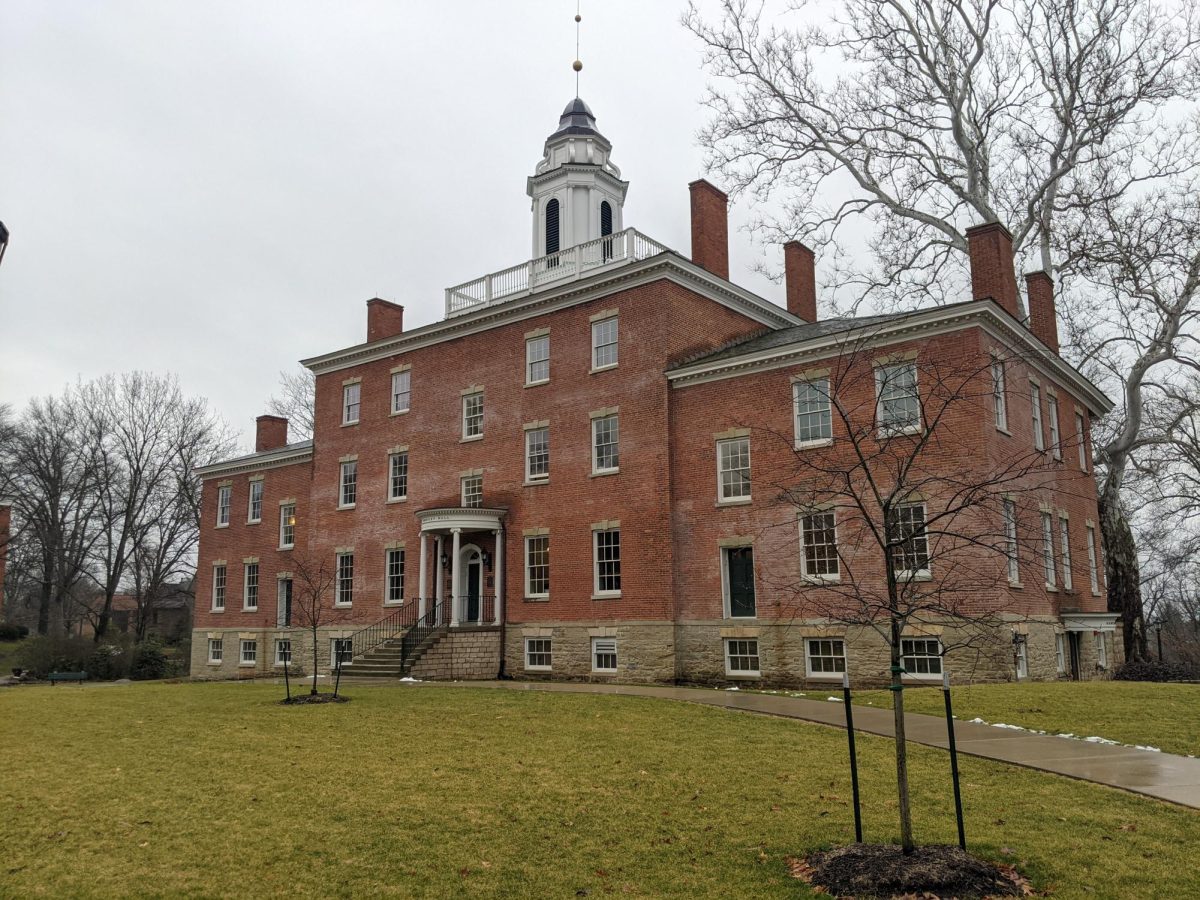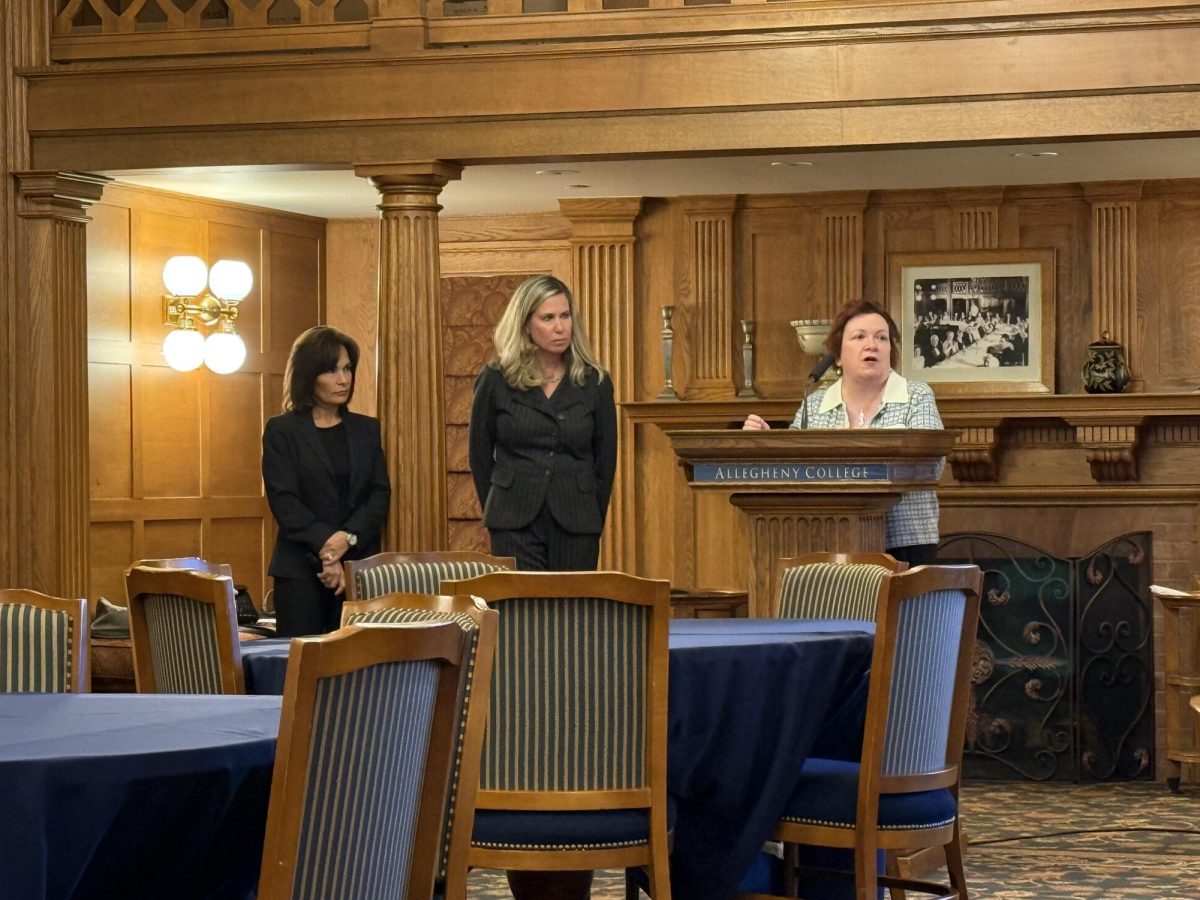Moody’s Investors Service downgraded Allegheny College’s issuer and debt ratings from Baa2 to Baa3 last week, citing “double-digit operating deficits” and “weak financial operations.” The Feb. 14 action is the third downgrade by Moody’s since 2016.
Credit ratings, much like individuals’ credit scores, evaluate an institution’s or business’ ability to borrow money and are generally used as a measure of financial strength.
The Baa3 rating is one step above a non-investment-grade, or “junk” rating — under which the institution is considered likely to default on its debts and would be a risky borrower. This was reflected when business outlet Bloomberg picked up the story with the headline “Longtime Pennsylvania Liberal Arts College’s Rating Cut to Brink of Junk.”
Cole responds
President Ron Cole, ’87, responded to the rating action — and Bloomberg’s headline — in an interview Tuesday morning, saying he was “disappointed” with Moody’s decision but that it was not “unexpected.”
“The only bearing it would have would be on interest rates that we might seek if we went out to debt through bond issuances, and we don’t plan to do that,” Cole said. “It’s unfortunate that Bloomberg chose to sensationalize this rating by Moody’s. It does no good, I think, to do that for any institution, but again, it has no bearing on our current or multi-year financial plan.”
Moody’s rating action, released Feb. 14, noted that the college still has “significant financial resources” in the form of around $289 million in cash and investments. At the same time, the report said that the college faces an uphill battle against “strained student demand” and continued spending deficits.
However, Cole said that the college’s budget is balanced, though not with recurring streams like tuition revenue. Instead, donations and other one-time revenues make up the “operating margin” between recurring revenue and expenses.
“Moody’s rating is based on our operating margin, which is strongly dependent on enrollment,” Cole said. “It does not necessarily account for non-recurring revenue that we’ve been able to use for balancing our budget.”
The budget conundrum will not be solved by reducing expenses, according to Cole, who said the college will not be downsizing in order to fully balance the budget.
“I believe we have more of a revenue problem than an expense problem,” he said. “We’re always looking for efficiencies, so we can always look for ways to save expenses, but we’re focused on rebuilding revenue rather than reducing expenses.”
Cole also pointed to the college’s debt to the Crawford County Industrial Development Authority — which totaled around $50 million in June 2023.
“Relatively speaking, Allegheny College is carrying very low debt for our institution and that’s from prior capital projects,” Cole said, noting that Moody’s ratings have not affected payment of that debt. “That’s why we still have a relatively strong balance sheet; we have low debt, we have a strong endowment — it’s a modest-size endowment, but it’s strong and doing well. The key variable is our operating margin.”
S&P Global
At least one other rating agency agrees. S&P Global gave Allegheny an A- rating in a report published in June 2023, with a stable outlook. An A- from S&P is three ranks higher than a Baa3 from Moody’s, according to Overbond.com.
S&P pointed to the college’s “relatively consistent retention and selectivity” to explain their rating.
“They were looking at similar variables, but they also took into account the progress that they’ve seen Allegheny toward changing our outlook for enrollment, that we are not sitting idle, that we’re working towards solutions, ” Cole said. Moody’s outlook on the college’s rating is “negative,” driven by what the report sees as an uphill battle against a shrinking market. Allegheny’s enrollment has steadily dropped for more than a decade, from a height of around 2,100 students to, as of last fall, just over 1,200 students.
College administrators — including Cole — have also sounded the alarm on a “demographic cliff” of fewer high school graduates, expected to hit in the next few years.
“Deeply unbalanced financial operations and strained student demand provide for escalating credit challenges,” Moody’s analyst Christopher Collins wrote in the report. “With weak demographics and elevated student market competition, both pricing power and revenue growth will remain suppressed. Absent a meaningful strengthening in student demand, generating material operating performance improvement will prove difficult given the college’s limited economies of scale and high educational expenses per student at just under $47,000.”
The report went on to state that an upgrade in ratings could come with an increase in student demand and progress towards enrollment targets, as well as improving expense margins. If the college does not restore student revenue growth by next fiscal year and liquidity erodes further, then Allegheny’s credit rating could be downgraded again.
Strategic Pathway
Cole’s response? The strategic pathway launched last year, which outlines five goals including improving college operations and financial stability.
“The strategic pathway is designed to build enrollment,” Cole said. “I have confidence in the plans that we’ve mapped out, our Board of Trustees has confidence and we’re gaining momentum around this as we go forward.”
Balancing the budget is only one of the primary goals of the pathway though, with the others including connecting with the broader Meadville community, as well as expanding and improving academic programs. To Cole, at least, the idea is a revitalization beyond the simple calculus of more students = more revenue.
“Rebuilding enrollment to me means rebuilding a vibrant and inclusive campus,” Cole said. “It’s not just about enrollment connected to our operating margin, it’s about providing an opportunity for students from across the country and our region to gain a world-class liberal-arts education. It’s about engaging students with our faculty and staff, who care deeply about student outcomes.”
He said it was “ironic” that the interview happened on Tuesday — the day the college formally announced $21 million in donations to capital projects. $16 million of the gifts come from longtime donor Patricia Bush Tippie, ’56, including $10 million to renovate Brooks Hall. On Tuesday, the college announced an additional $5 million anonymous donation to begin work on Reis Hall.
“Throughout the course of this spring, I’m very excited that we will be announcing other major gifts and investments, investing in our core strengths as an undergraduate liberal arts institution as well as looking for how we’ll innovate going forward,” Cole said. “We have a lot to be proud of, and a lot of reason to be confident in our future. The Moody’s reading has no bearing on that right now.”
Moving forward
In the short term, Cole pointed to increases in applications and commitments for the Class of 2028, who will matriculate in August of this year. This comes despite slowdowns with the Free Application for Federal Student Aid, which means that prospective students are committing without knowing much of their financial aid package.
“Deposits are up by about 30 percent from where they’ve been — and that’s even with the delays in the FAFSA,” Cole said, adding that the trends were “good signs” for restoring enrollment. “The overall goal of rebuilding to a school of say 1,500 to 1,600 students, that’s a multi-year goal. It not only includes attracting new students but helping to assure the success of our students once they’re here, so they will retain and complete their degree.”
For members of the Allegheny community that do not agree, or want further information, Cole said that they should reach out to him and his administration.
“Allegheny has an amazingly strong future,” Cole said. “I would encourage anybody who has questions to ask them, to not make assumptions, to not be swayed by sensationalized headlines, to lean in with me and with us to shape a strong future for the college.”














Al Coppolo ‘78 • Feb 24, 2024 at 4:46 pm
Let’s take a look at the other side of this coin … the front side of Bentley on a sunny day. Here are the things that have changed since Allegheny was driven into its current condition. The college has a new president, one who knows the school and has the respect of all its constituents. The college has a constituent authored strategic plan, validated by an alumni lead third party consulting team, and being executed by the school’s leadership team. The college has recently announced the largest alumni level support in its history. And, the college is about to bring a level of leadership to its enrollment and marketing functions that it has not seen in nearly a decade. If Allegheny offered stock, this would be the time to invest. The institution has seen a low, for a variety of reasons (whose explanation will simply cultivate bad ground), it is poised for steady improvement and regional prominence in the next five years. This is the chapter of the story that deserves press and attention. It’s time to buy – this stock is on its way up!